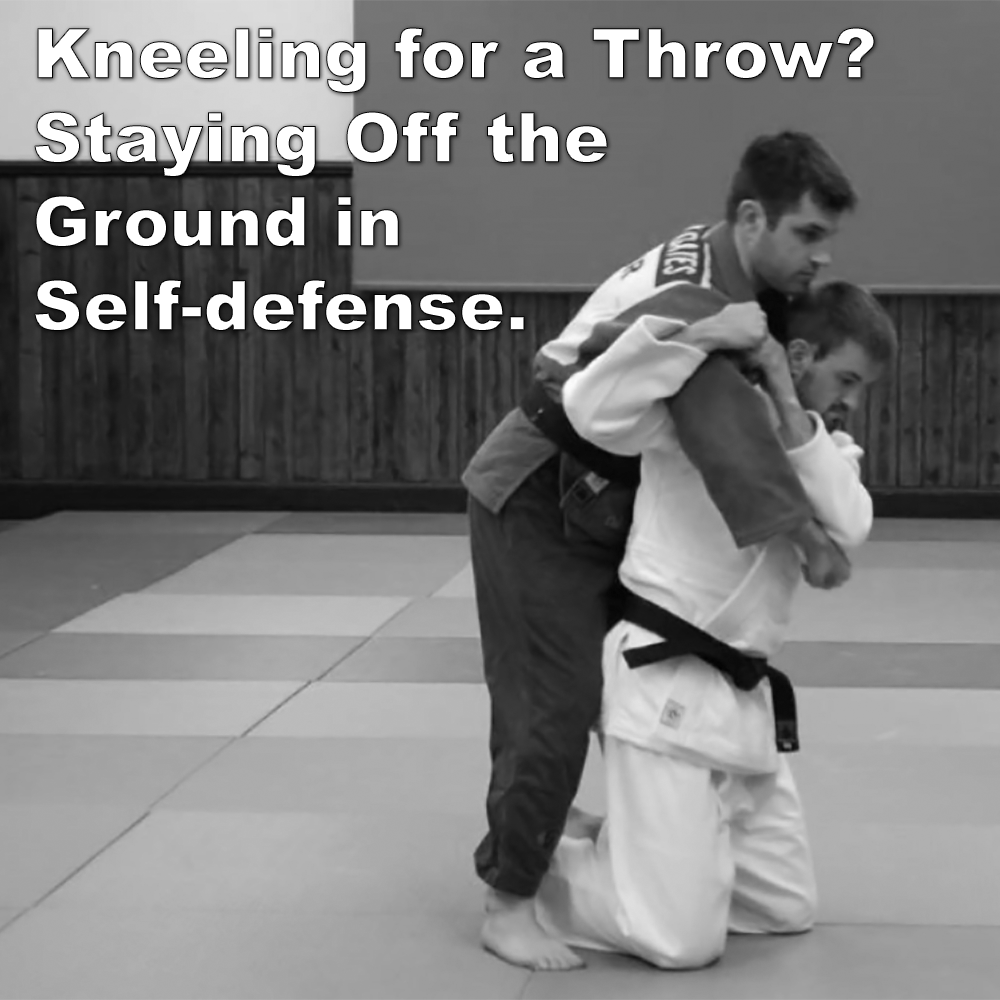
(Approx 2 minute 25 second read)
Recently, I was asked to sit in on a grading where a student was being promoted from 1st to 2nd dan. When asked to perform self-defense the student performed several throws from judo, some from a kneeling position.
.
For me, this was not an ideal representation of a self-defense scenario. In self-defense it’s possible you will end up on the ground, but this should not be your starting point. The ground is the worst place to be in a self-defense situation. It should never be deliberately sought, and if you do end up there, the aim is to get up fast.
.
Throws from judo can of course be used for self-defense, but in this respect, it is not its primary purpose.
.
Judo is a sport with the focus on one-on-one competition, where you do often end up on the ground, aiming for holds, locks, or strangles to win.
.
But even though they are similar, throws from judo, are rarely part of karate’s curriculum. This highlights a common misconception – treating them as interchangeable. While hugely effective in their context, they have very different functions.
.
In judo, throws are performed from specific grips, and stances, often initiated from a clinch. In karate, throws exist too, but they are typically used as follow-up techniques to strikes or as opportunistic takedowns, rather than being the core of the art.
.
To see how throws fit into traditional karate, we can look at Okinawan styles that have preserved a broader base of practical techniques. You can also find a good example of these throws in Gichin Funakoshi’s book ‘Karate-Do Kyohan’, which contains nine specific throws. But these are rarely taught in a modern dojo.
.
If you want to learn judo throws, there are great reasons to do so. But why would you go to a karate dojo for that? It makes more sense to go directly to the specialists: a judo school.
.
Most judo players know exactly the focus of their art, and it’s not self-defense. Like anything, there are exceptions of course, but they are usually totally clear on their training objectives.
.
Learning throws from judo in a self-defense context without understanding the principles behind them, can lead to their use in the wrong context. Of course there can be a crossover, but sport judo isn’t designed for that purpose.
.
Many of the judo methods of breaking grips, escaping from holds, keeping your balance, etc, do have relevance to self-defense, but they need to be drilled in that context. You need to practice escaping from possible multiple attackers not on taking a single assailant to the floor.
.
For karate practitioners looking to incorporate throws, it’s important to consider the ‘entry’ into the throw. Simply learning a throw with different stances and positioning, and trying to apply it to self-defense maybe the wrong context. You’re not looking for a prolonged grappling exchange, but rather an escape route. And unlike in the grading demonstration above, the goal should be to avoid going to the ground if possible, and especially kneeling.
.
If you’re looking to integrate throws into your training, it’s worth investing time in understanding how they fit into that training overall. If you want to learn to win at sport, then sport is ideal. If you want to learn self-defense, then you need to train specifically with that goal in mind.
.
While cross-training in judo, or any other art, can be extremely beneficial, it’s essential to recognize the different focus and context, especially if you are training for self-defense.
.
.
By Adam Carter – Shuri Dojo.
